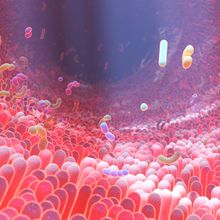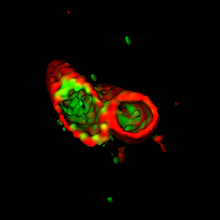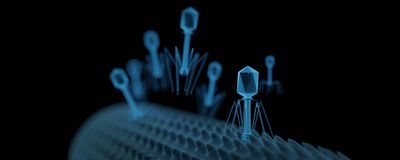immunology, bacteria

A Question of Balance: How the Gut Microbiome Influences Diabetes
The Scientist | Dec 1, 2022 | 1 min read
The presence of beneficial or detrimental microbes pulls the host toward health or disease.

Human Protein Dissolves Bacterial Membranes
Abby Olena, PhD | Jul 15, 2021 | 4 min read
The protein, apolipoprotein L3, destroys invading microbes by acting as a detergent in the cytosol.

Many Deep-Sea Microbes Invisible to Mammalian Immune System
Abby Olena, PhD | Mar 12, 2021 | 3 min read
In a new study, human and mouse cells recognized only one in five bacterial species collected from more than a mile below the Pacific Ocean’s surface.
